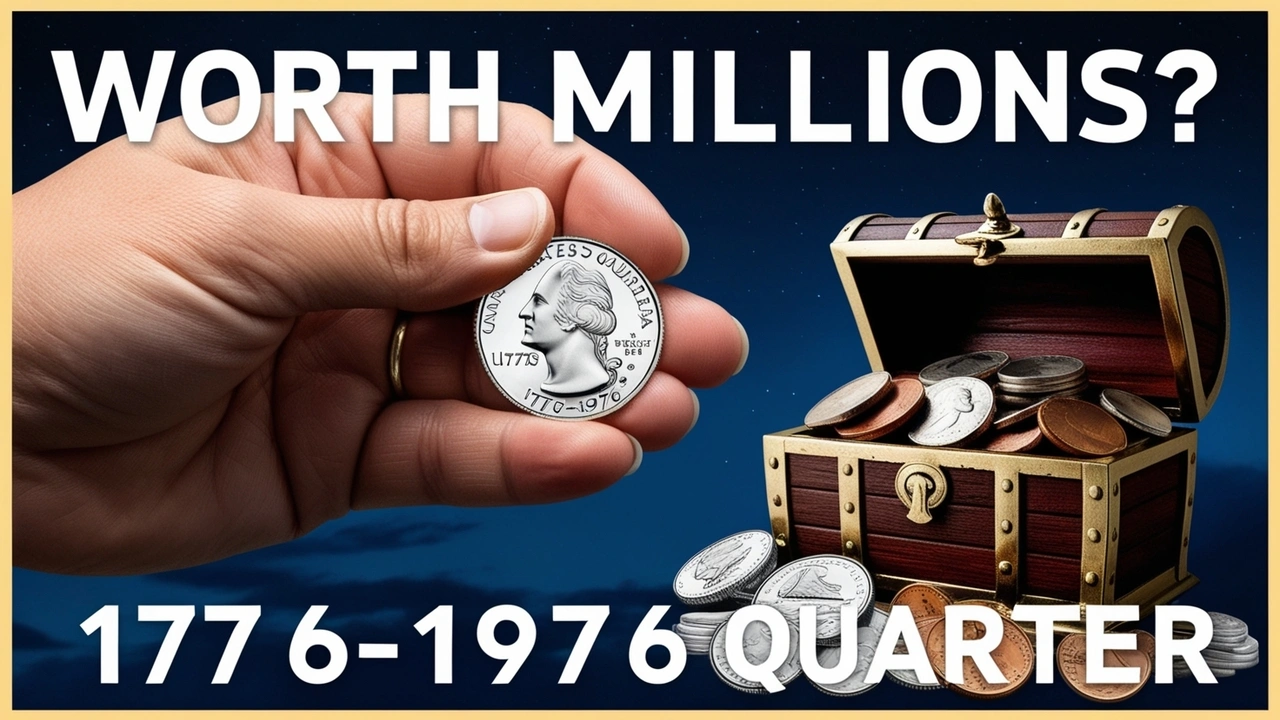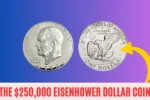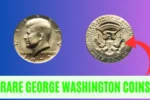The 1776-1976 Bicentennial Quarter is one of the most iconic coins in U.S. history, released to celebrate the 200th anniversary of the signing of the Declaration of Independence. With its unique design and historical significance, it has captured the attention of coin collectors and history enthusiasts alike. But just how much is it really worth? Let’s explore the history, design, and factors that influence the value of the 1776-1976 Bicentennial Quarter.
Quick Facts About the 1776-1976 Bicentennial Quarter
| Feature | Details |
|---|---|
| Purpose | Commemorates 200 years of American independence. |
| Design | Drummer boy on the reverse, George Washington on the obverse. |
| Mint Years | 1975 and 1976 (dual-dated 1776-1976). |
| Composition | Clad (copper-nickel) and silver (40%) varieties. |
| Mint Marks | Philadelphia (no mark), Denver (D), San Francisco (S). |
| Production | Over 1.6 billion minted. |
| Value Range | 25 cents to hundreds of dollars, depending on rarity and condition. |
Historical Background of the Bicentennial Quarter
The U.S. Mint introduced the Bicentennial Quarter as part of a coin series to celebrate America’s bicentennial in 1976. Along with the quarter, the Mint released commemorative versions of the half dollar and dollar coins. Unlike regular quarters, the Bicentennial version features the dual date “1776-1976,” representing two centuries of independence.
On the reverse side, artist Jack L. Ahr designed a colonial drummer boy surrounded by 13 stars, symbolizing the original 13 colonies. This patriotic imagery, along with the limited mintage, makes the coin a cherished keepsake.
What Makes the Bicentennial Quarter Unique?
1. Dual-Dated Design:
The standout feature of the 1976 Bicentennial Quarter is its dual date (1776-1976), marking it as a commemorative issue, unlike any other quarter in circulation.
2. Diverse Composition:
While most Bicentennial Quarters are made of copper and nickel, a special silver version containing 40% silver was produced at the San Francisco Mint. These silver quarters, found in proof and collector sets, are significantly more valuable.
3. Popularity Among Collectors:
The Bicentennial Quarter was released during a time of national pride and remains a popular item among collectors today, thanks to its historical relevance and distinct design.
How to Determine the Value of Your 1976 Bicentennial Quarter
The value of a 1776-1976 Bicentennial Quarter depends on a few key factors:
1. Condition of the Coin:
The coin’s condition plays a major role in its value. A quarter that’s uncirculated or in mint condition will typically fetch much higher prices than a well-worn coin.
- Circulated Coins: Typically worth face value (25 cents).
- Uncirculated Coins: Ranging from $1 to $10, depending on the quality.
2. Mint Marks:
Look for the mint mark below the drummer boy on the reverse side of the coin:
- No Mint Mark: Produced in Philadelphia.
- D: Minted in Denver.
- S: San Francisco Mint—proof or silver coins with this mark tend to be more valuable, particularly those with 40% silver.
3. Rare Varieties and Errors:
Certain minting errors can drastically increase the value of the Bicentennial Quarter:
- Doubled Die Errors: Slight doubling in the design can make these coins worth hundreds.
- Off-Center Strikes: Rare and highly sought-after by collectors.
- Wrong Planchet Errors: Coins minted on incorrect metal planchets can command thousands.
Current Market Value of the Bicentennial Quarter
Here’s a general idea of the current value of different 1976 Bicentennial Quarters:
- Circulated Coins: Worth around 25 cents to $1.
- Uncirculated Coins: Typically valued at $1 to $10.
- 40% Silver Proofs: Around $5 to $30, depending on condition.
- Rare Error Coins: Can range from $100 to over $1,000, depending on rarity and demand.
For the most accurate value, consider having your coin professionally graded by services like PCGS (Professional Coin Grading Service) or NGC (Numismatic Guaranty Corporation).
Identifying Rare Bicentennial Quarters
To spot a potentially valuable Bicentennial Quarter, look for these key features:
- Errors: Look for doubled designs, misalignments, or unique minting imperfections.
- Mint Mark: An “S” mint mark often indicates a higher-value proof or silver coin.
- Condition: Coins in uncirculated or near-mint condition are the most valuable.
A magnifying glass or coin loupe is a helpful tool for inspecting the details closely.
Tips for Storing and Preserving Your Bicentennial Quarter
To maintain the value of your coin, proper storage is essential:
- Protective Holders: Use coin flips, capsules, or albums to avoid scratches and tarnishing.
- Avoid Handling: Handle coins by their edges to prevent oils from your fingers transferring onto the surface.
- Control the Environment: Store your coin in a cool, dry place away from sunlight and humidity.
Investing in good storage will ensure that your Bicentennial Quarter remains in pristine condition for years to come.
FAQs About the 1776-1976 Bicentennial Quarter
1. Are Bicentennial Quarters rare?
While the majority of Bicentennial Quarters are not rare, certain varieties—especially error coins—can be very valuable.
2. How can I tell if my quarter is silver?
Silver Bicentennial Quarters (40%) will have an “S” mint mark and were typically sold in special collector sets.
3. Are all Bicentennial Quarters valuable?
Circulated quarters are generally worth their face value, but uncirculated coins, proofs, and error coins can be worth much more.
4. Where can I sell my Bicentennial Quarter?
You can sell your coin on online platforms like eBay, at coin shows, or through local coin dealers.
5. What is the most valuable Bicentennial Quarter?
Coins with significant minting errors, like doubled dies or wrong planchet coins, can be worth thousands.
Final Thoughts
The 1976 Bicentennial Quarter is more than just a commemorative piece; it’s a symbol of American history. While most of these quarters are worth only 25 cents, rarer varieties—like the silver proofs or error coins—can command impressive prices.
If you’ve got a Bicentennial Quarter in your collection, take a closer look at its condition, mint mark, and any unique characteristics. You might just have a rare gem worth far more than its face value.



